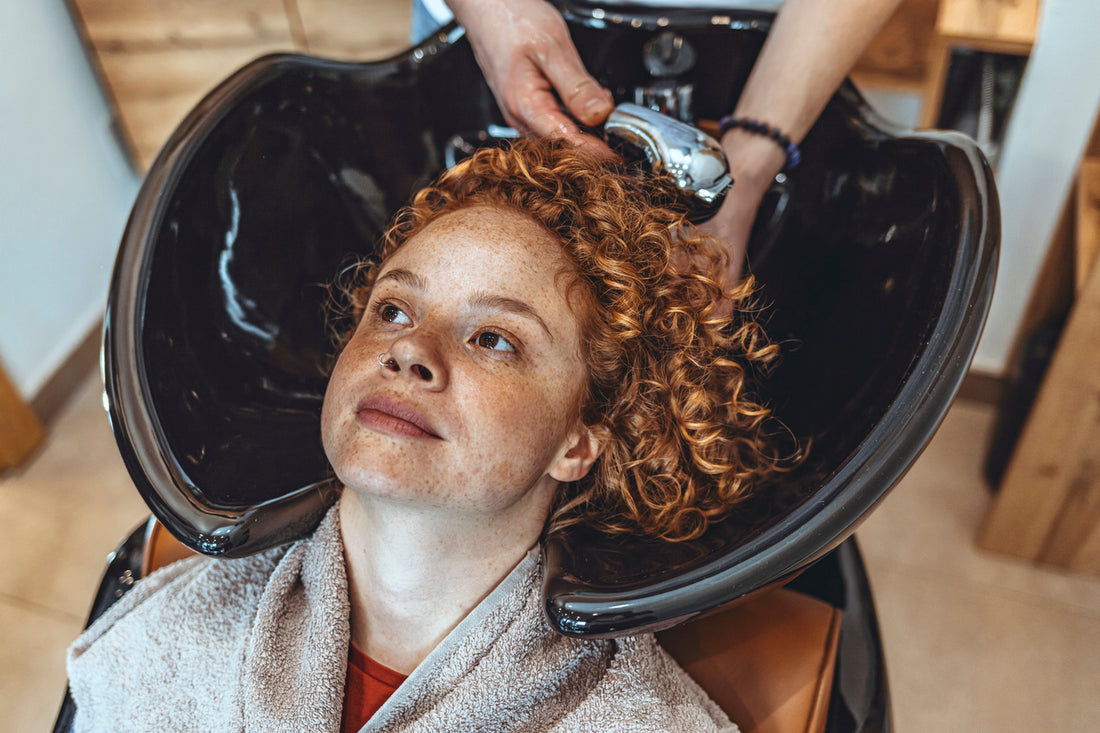
9 Tips to Keep Your Color Treated Curly Hair Healthy

Curly hair is naturally beautiful and vibrant. Still, sometimes you want to switch up your style. Adding a pop of color or strategically placed highlights are great ways to make a bold change. Unfortunately, adding moisture-zapping color to curls that already tend to be dry can be intimidating. If you have curly or coiled hair, you probably already go to great lengths to keep your tresses properly moisturized. Dyeing your hair or adding highlights may leave you with dried-out or fried, unhealthy-looking hair.
However, if you take the right precautions and find a styling routine that works for your colored curls, you can have the best of both worlds. Amazing color and healthy curly hair aren't mutually exclusive: they can go hand-in-hand. Whether you've already colored your curly hair or longing to see some colored curls in your future, use these tips to learn how to keep those color-treated curls healthy and beautiful.
PRE-COLORING TIPS
Whether you've colored your curly hair in the past or working with virgin hair (hair that's never been colored), it's important to make sure your curls are healthy before you begin. Curly hair is drier and more delicate than other hair types. Natural oils from the scalp travel down the shaft of the hair to provide the moisture it needs. Textured or curly hair creates a more difficult path for these oils to travel, leading to drier hair. Before you color, you can take some special steps to add moisture to your hair and eliminate potential problems - before they occur.
1. Prepare Your Hair
Before you color your curls, it's essential to get your hair into the best health possible. If your hair isn't healthy before coloring, the road to healthy hair will be much more difficult after using those drying chemicals often used in the hair coloring process. Taking these steps to prepare can mean the difference between minor and major damage.
- Get a color consultation. Your stylist can examine the condition of your hair and determine exactly how to proceed with a healthy color. Be prepared to discuss how you style your hair and your hair color history. You need to be honest about your history, as this is the best indicator of how to add color without severely damaging your hair. Ask your stylist about specific products that can prepare your hair for the damaging effects of color and request a strand test to see how your hair will react to the product.
- Add extra moisture. The coloring process can be hard on your hair; dryness is the most common side effect. Using moisturizing shampoos and conditioners in the weeks leading up to your appointment will boost your moisture level and increase your hair's health.
- Eliminate heat styling tools. Heat styling can cause dryness and damage. One week before coloring, remove heat styling tools from your routine. Swap out your ordinary blow dryer for a RevAir Dryer system. Our advanced temperature sensors ensure gentle heat so it won't damage your hair and will help preserve the curl patterns.
- Skip your regular washing routine. It's a common myth that your hair should be freshly shampooed to properly take color. On the contrary, your hair's natural oils provide a barrier to protect your hair and scalp from the chemicals used in the coloring process. For the last few days leading up to your coloring appointment, skip your daily shampoo.
- Get a trim. Frayed, damaged ends are more susceptible to damage than healthy hair. Trimming these ends before coloring your curly hair can help you prevent damage.
2. ASK ABOUT OLAPLEX
The coloring process can be damaging to your already delicate hair. Hair damage is caused when aggressors like heat, friction, tension, and chemicals break the bonds on the outer layer (cuticle) of your hair. Essentially, this outer layer has tiny cracks that weaken your hair. Olaplex is a bond multiplier that repairs broken bonds, strengthening your hair to prevent breakage. Olaplex provides a full line of hair restorative products, including those used in the salon. Many of its products can be used at home.
Colorists use Olaplex 1 as an additive to color by combining it directly with the color to prevent damage before it occurs. Olaplex 2 is used post-coloring but before you shampoo. Ask your colorist about using these products during the coloring process and about the products you can add to your after-color routine at home.
3. CONSIDER MULTIPLE APPOINTMENTS FOR SAFER COLORING
If you're changing your curls from black to platinum blonde or a light pastel, you may need to visit your stylist more than once to achieve the complete effect without significant damage. Significantly lightening your hair in one treatment can change your curl pattern and cause a loss of elasticity, not to mention zapping the moisture from your curls and leaving them fried. Multiple appointments allow your hair time to recover and will provide you with time to keep pumping moisture into your locks between colorings.

MAINTAINING HEALTHY CURLS AFTER YOU COLOR
After coloring, your curls will need a little extra TLC to keep them healthy and properly moisturized. Working these tips into your routine will do the trick. Not only does healthy moisturized hair look great, but it will also help you maintain that bold, bright new color you worked so hard to achieve.
1. BEGIN YOUR ROUTINE WITH A PRE-POO
Pre-poo is a shortened version of pre-shampoo. Pre-poo allows you to add vital moisture to your hair and scalp before picking up the shampoo bottle. If you have dry, tight curls that are prone to dryness, tangles, and shrinkage, pre-poo can be a game-changer!
Even gentle sulfate-free shampoos can strip your hair's moisture. Pre-poo provides a protective barrier for your hair, helping you avoid the drying effects of cleansing. You also get the bonus of eliminating those dreaded tangles that usually crop up on wash day. Deep conditioners and hair oils can be used to pre-poo. If you're unsure about the right products for your hair type, ask your stylist for suggestions.
2. USE THE RIGHT WASHING ROUTINE
The products and the process you use when washing your hair can make or (literally) break the finished product. It's no secret that curly hair is delicate and prone to breakage. Sulfate-free products designed for colored hair can help you avoid damage on wash day. Combining your shampoo with certain additives can help you overcome specific issues.
3. DRY WITH CARE
The most common advice for dry or delicate hair is to avoid a hair dryer at all costs. In reality, however, that advice is rarely practical. Washing, conditioning, and styling your hair takes a significant amount of time. Adding extra time to let your locks dry naturally is often out of reach. RevAir provides a revolutionary reverse drying technique that gently and safely dries delicate hair. It even helps eliminate the shrinkage often associated with type 3 and 4 curly textured hair.
4. STYLE WITH A LIGHT TOUCH
Curly hair is prone to breakage. Adding color makes your curly hair even more delicate. Use a light touch when detangling. While conditioning, use your fingers or a wide-toothed comb to gently rake away tangles. Always begin at the bottom of the hair shaft and work your way up to the roots. While it might seem like a good idea to leave your hair to dry naturally overnight, it's essential to remember how delicate wet hair can be. Tossing and turning on your wet hair overnight can lead to breakage. If you must sleep on wet hair, protective styling can be your best friend.
5. DON'T FORGET ABOUT DEEP CONDITIONING
Finding the right deep conditioning schedule for your curly hair is an absolute necessity after coloring. Since coloring's chemical process makes your hair more porous, moisture leaves your hair quicker than ever. You may find yourself using your favorite deep conditioning treatment twice as often as you did before you colored your curly hair.
If the deep conditioning routine you're accustomed to isn't quite doing the job, you can give your hair a porosity test to determine if your hair has low or high porosity. Choosing products based on this test can make your deep conditioning treatments more successful. Choosing oily conditioners or adding protein treatments could be the magic ingredient you've been looking for to restore the moisture balance you need.
6. ASSESS THE HEALTH OF YOUR HAIR BEFORE RECOLORING
Color is beautiful, but it's not worth sacrificing the health of your hair. Luckily, curls mask growing roots, which allows curly girls to add more time between coloring appointments. When you're ready to add more color, it's time to examine your hair for damage. Excessive dryness or hair breakage is a good sign you should space out the time between your coloring appointments. Discuss your options with your stylist to enhance your hair's health before your next treatment.
Healthy, colorful curls are within your reach, and using these tips can help. To learn more about great curly hair care tips and a variety of products designed for beautiful and healthy hair, check out the RevAir website today. If you have questions about any of our RevAir products, please feel free to reach out to one of our consultants. We're always here to help and to ensure that your RevAir experience is awesome!















